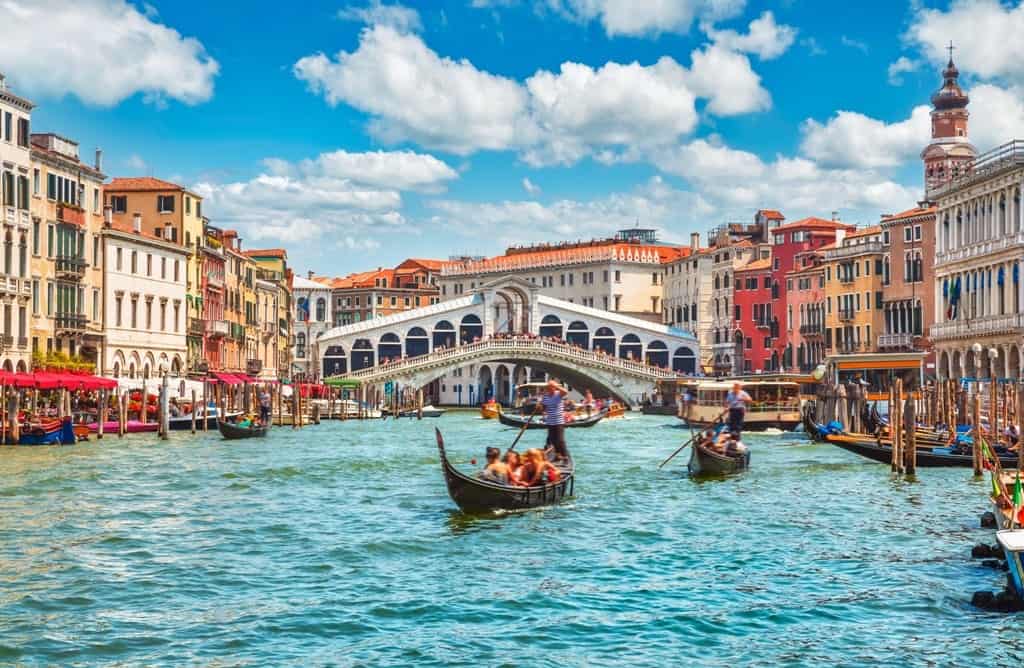Venice, also known as the “Serenissima”: who in the world doesn’t know it? If you have ever been to Italy, you’ve probably spent at least a couple of days there. Aside from its ancient history and its artistic masterpieces, there’s much more to discover: here are some interesting facts and curiosities about Venice you might not know!
25 Interesting Facts About Venice
- You may have noticed that nobody talks about “vie” (streets) or “piazze” (squares) except when referring to Piazza San Marco. Venetians only speak about “calli”, “fodamenta”, “campi” and “campielli”. Why?
– “Campo” literally means “field” and it is the local name of a square. It comes from a time when there where grassy fields and orchards in those places that were later paved to look like real squares.
– A “Campiello” is a small square.
– The word “Calli” comes from Latin and it means “paths” referring to the narrow streets of Venice
– The world “Fondamenta” means “foundations” and it refers to the banks of the canals, which are also the actual foundations of buildings.
- The oldest European Jewish Ghetto was established in Venice. A flourishing Jewish community lived in Venice since the Middle Ages, but it was not always well-liked by the local government. In 1516, a law established certain restrictions to Jewish mobility and stated that Jews had to live in a special neighborhood closed by gates during the night and the main Christian celebrations.
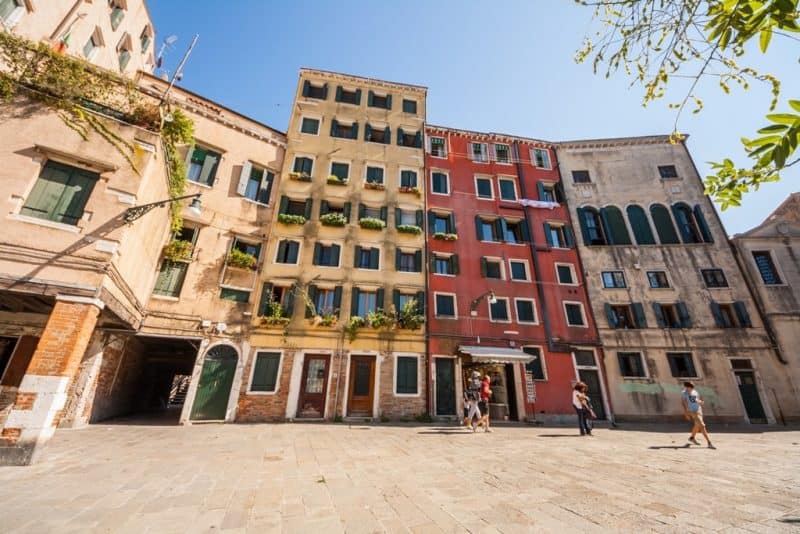
- St. Mark’s Bell Tower has 5 bells and each one had a specific function in the past. Campanon (the largest one) rang at the beginning and at the end of the working shifts of the Arsenal’s workers, Nona is the one still ringing at noon, Trottiera announced the meetings of the Great Council, Pregadi rang before the senate meetings and the religious celebrations and Renghiera announced the capital executions.
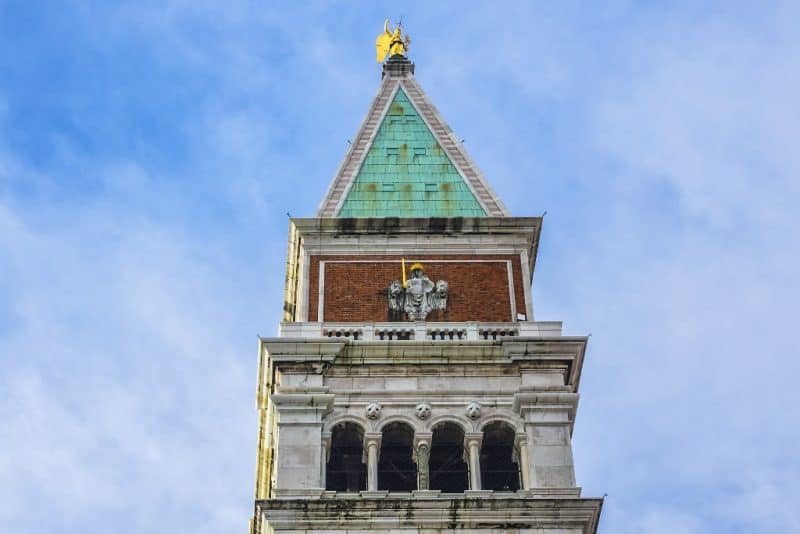
- Venice has 4 leaning towers: that’s because the ground is not so solid being made of sand! A few towers began to lean soon after their construction and after a couple of centuries the slope angle has become increasingly visible. Where? Take a look at S. Giorgio dei Greci tower, St Stefano tower, Basilica of San Pietro di Castello and Burano tower.
- Spend a night out at a “bacaro”!It’s the name of local traditional taverns with a rustic and familiar atmosphere. They usually have wooden tables, wooden barrels, hanging pots and they are really old-fashioned but extremely picturesque.
- One of the weirdest fun facts about Venice is about the so-called “Ponte dei Pugni” (punching bridge) in the Dorsoduro district. It’s small and rather plain but it was once the background of some epic fights between two rival gangs named Nicolotti and Castellano. These super fights were banned with a special law in 1705, but you can still see the signs marking the position of the two fighters.
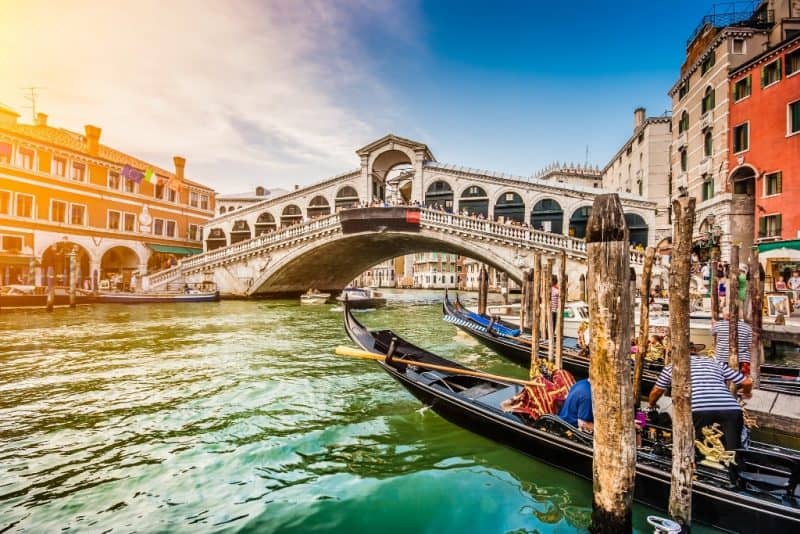
- The first woman in the world to earn a university degree was from Venice! Her name was Elena Lucrezia Corner Piscopia and she graduated in Philosophy on June 25th 1678 at the University of Padua. Her final dissertation was about Aristotle and it was entirely written in Latin.
- Bikes, skates, scooters, cars and motorbikes are all forbidden in Venice. How do you get around then? Only on foot or by vaporetto (water taxi)
- Have you ever heard of “Titian Red”? It’s the name of the hair color Tiziano gave to her female figures. It’s orange-red, warm and refined and all the noblewomen used to dye their hair to look like the beautiful ladies in Tiziano’s paintings!
- On the floor of St. Mark’s Basilica, there’s a special tile: it represents a red heart with a hedgehog and a crown in the middle. The heart of Francesco Erizzo is buried right under the tile! He was the 98th Doge of Venice and the hedgehog was the symbol of his noble family.
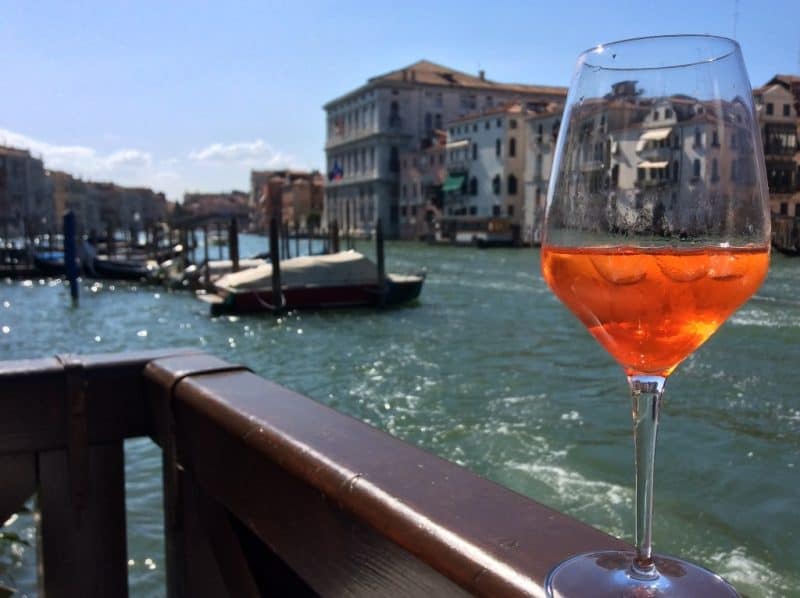
- Another fun fact involves a typical local drink called Spritz. It is now widespread throughout Italy and Europe and it has become the symbol of an Italian-style happy hour. It dates back to the end of the XVIII century when the Austrians dominated several territories in Northern Italy. They used to dilute strong local wine with some sparkling water and they called it “spritz” from the German verb “spritzen” meaning “spray”.
- Venetian masks are famous all over the world, as well as the local lavish Carnival celebrations. Among the refined and richly decorated XVIII century masks, one stands out being completely black: the so-called “Moretta” mask. In the past, it was made of black velvet and it was only for ladies being a key element of courtship: men had to be clever enough to persuade ladies to take it off in order to see them!
- Did you ever wonder why gondolas are black? In the past, a gondola was an actual status symbol for nobles who were constantly competing to see who had the more extravagant, colorful, and decorated one. When ostentation got out of control, an XVII century law stated all gondolas had to be black to stop that nonsense!
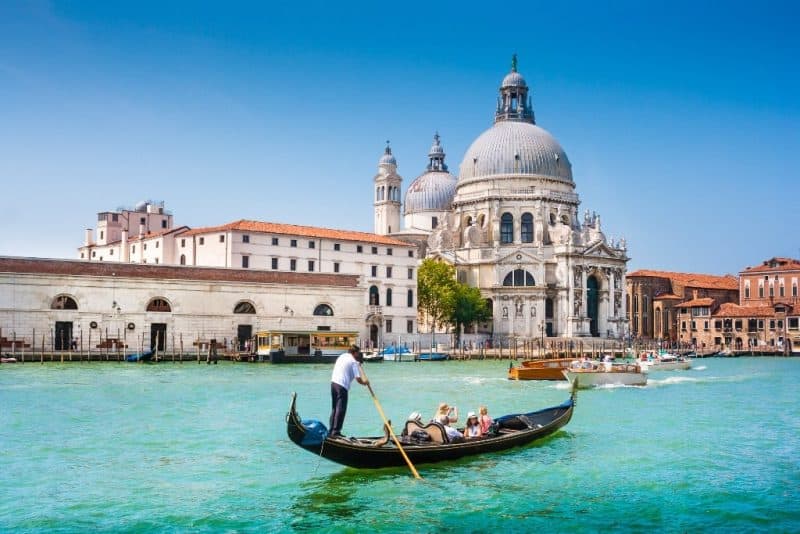
- Palazzo Grassi is said to be haunted by the ghost of a girl who died under mysterious circumstances. More than one guardian reported having heard the voice of a girl when the palace was completely deserted.
- Another spine-chilling place is located along the famous Canal Grande: Ca’ Dario. Every owner died under mysterious or tragic circumstances ever since its construction in the XV century! Needless to say, it is now uninhabited and nobody wants to live there despite its luxury and architectural beauty!
- Yes, it’s true, Venice is sinking! The Adriatic Sea is rapidly rising due to climate change while the city foundations are sinking into the sand of the lagoon.
- Lord Byron lived in Venice for some time and he wrote the first lines of his “Don Juan” in Mocenigo Palace. He definitely left a mark by giving one of the most famous Venice bridges an evocative name: the Bridge of Sighs, which is the one connecting Palazzo Ducale to the dungeons.
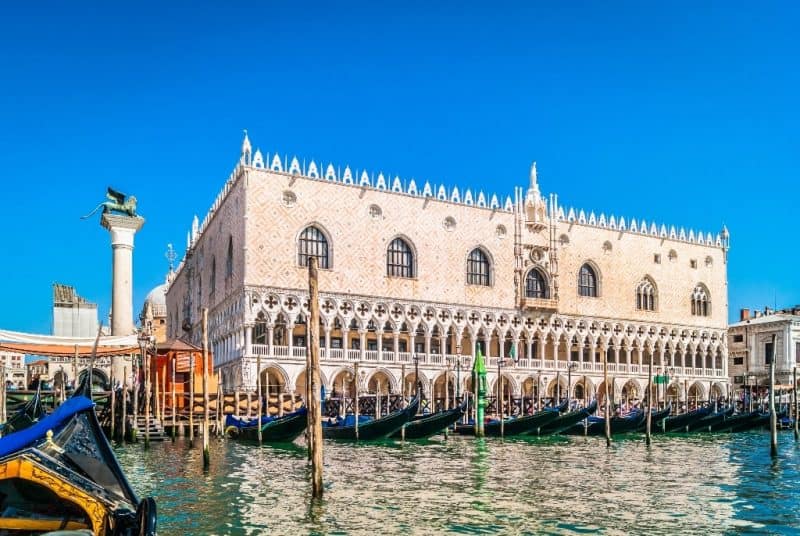
- If you are an art lover, you’ve probably already seen at least a couple of paintings by one of the most famous local artists: Tiziano. He was considered a genius by his contemporaries, but he was also well-known for being terribly greedy. An interesting fact? The scholar who found his tax income declaration said that he would have deserved to go to prison because of all his lies!
- Another famous local character was Giacomo Casanova: writer, alchemist, secret agent but also a great seducer and libertine. He went down in history for being the only prisoner who managed to escape the dungeons of Palazzo Ducale. He was imprisoned for the upheaval he caused in town with his libertine behavior and his scams against the elderly!
- The first “modern” casino was established in Venice in 1630. Dandolo Palace was a very special gambling house: games, wins, losses, and even frauds happened in complete silence! The only rule was that everybody who wanted to gamble had to stay masked and silent all the time!
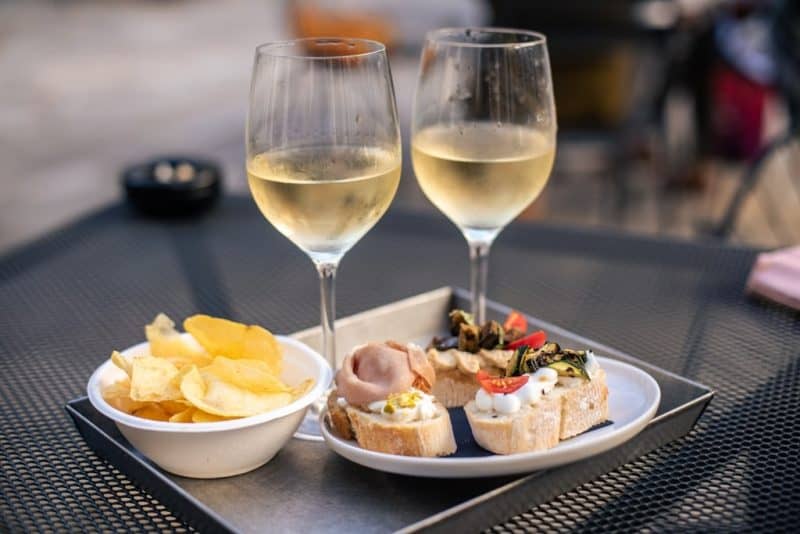
- Cicchetti & ombre: the perfect Venetian happy hour (or dinner)! Cicchetti are local tapas and the most popular ones are squid on a stick, meatballs, fried mozzarella, creamed codfish, or marinated sardines. An “ombra” (literally “shade”) is a glass of wine and it takes its name from an old habit of serving wine (and alcoholic drinks in general) in a poorly lit room.
- The symbol of Venice is a winged lion representing St. Mark, who is also the Saint patron of the city. You’ll see this symbol everywhere in Venice and also on the flag of the Veneto Region.
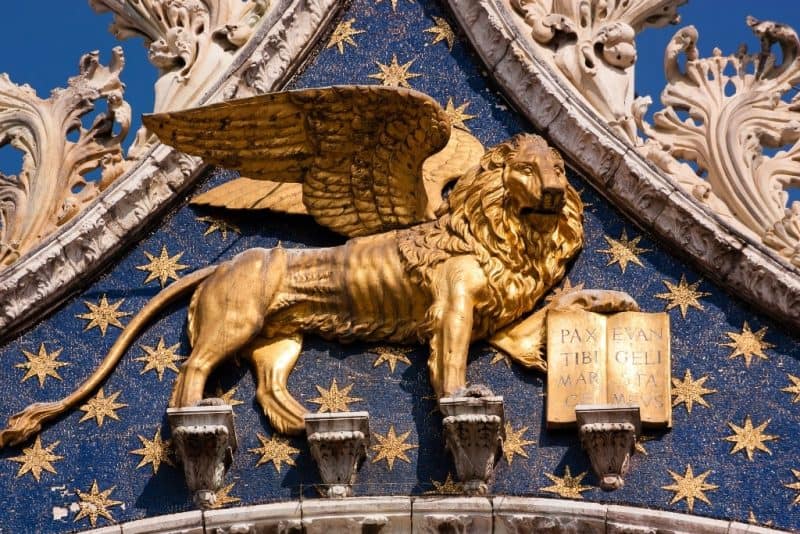
- April 25th is St. Mark’s Day and a special occasion for Venetians. There’s a lovely tradition named “bocolo” involving offering a rosebud to wives and girlfriends. On this special day, you’ll see plenty of red roses and rose vendors in St. Mark’s Square and you can really smell spring in the air!
- How many islands are there in Venice? You might be surprised to know that the city is built on 118 islands! It is crossed by 150 canals and 354 bridges.
- The famous explorer Marco Polo was from Venice and he left us one of the few and most important documents about medieval Asia in his work titled “Il Milione”. Why? He was born in a rich family of merchants and he was initiated to foreign trade at the age of 17. He travelled extensively and he especially focused on Asian Countries taking notes about cultures, people and places that were entirely unknown in Europe at that time!

